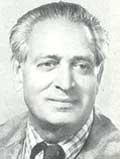Tigers` choice
 IT IS unfortunate that the tiger has lost its most forceful defender at a time when new threats of extinction loom large over its horizon. The death of Kailash Sankhala(69), the first director of Project Tiger, on August 15 this year brings the curtain down on a remarkable career in conservation. His pivotal role in the creation of tiger reserves in India was capped by several other roles: author, photographer, zoo director and researcher. Sankhala's success in defeating the entrenched shikar (hunting) lobby and halting commercial forestry in the core areas of the tiger reserves won him encomiums among environmentalists.
IT IS unfortunate that the tiger has lost its most forceful defender at a time when new threats of extinction loom large over its horizon. The death of Kailash Sankhala(69), the first director of Project Tiger, on August 15 this year brings the curtain down on a remarkable career in conservation. His pivotal role in the creation of tiger reserves in India was capped by several other roles: author, photographer, zoo director and researcher. Sankhala's success in defeating the entrenched shikar (hunting) lobby and halting commercial forestry in the core areas of the tiger reserves won him encomiums among environmentalists.
The son of a forester, Sankhala joined the Indian Forest Service in 1953. He shot his first (and last) tiger near the Sariska wildlife sanctuary. The rest of the 43 tigers he 'shot' were courtesy his camera.
Sankhala's zeal for wildlife preservation was not widely shared. As the divisional forest officer at Bharatpur, he was helpless against the Maharaja and his guests who continued to shoot migratory birds within the Keoladeo sanctuary. The hunting of big game was also assuming menacing proportions, particularly in the hands of foreign tourists. Sankhala later recalled that even tigresses with cubs were not spared.
In 1965, Sankhala was made the director of the Delhi zoo. He is still remembered for his success in breeding white tigers and in developing 3 large ponds to attract migratory waterfowl. A lesser known fact is that the layout of the zoo was planned after taking into consideration the natural habitat and the region of origin of the birds. This novel ecological concept has only been lately adopted in the West. It was during his stint as director that Sankhala once turned up on Indira Gandhi's birthday with a bagful of tiger cubs!
Tiger hunting was finally banned in 1969. Sankhala's research as a Nehru Fellow from 1969 to 1971 and his report, The Status of the Tiger in India, based on shikar records and extensive fieldwork, made a simple point: without urgent measures to save its habitat, the tiger was in danger of extinction.
Project Tiger was formally launched in April 1973 with Sankhala as director. He often quipped that his ideal was to "do nothing and not let anybody do anything". Instead of interfering with the natural process, the emphasis was on the exclusion of human activity. The tiger itself became a "flagship" species for protecting the wide range of plants and animals found in tigerland.
The design of Project Tiger owed much to Sankhala's identification with tiger conservation. The 18 reserves included very diverse ecosystems -- from the mangroves of the Sundarbans to the dry thorn forests of the Aravallis in Sariska. Commercial felling was banned in the core areas of each reserve, although forestry operations continued in the wider buffer zones. The recovery in the numbers of tigers is only one index of the success of the scheme. More important was the success of reserves like Kanha and the Sundarbans that also accommodated large populations.
The project was on firm footing by the time Sankhala returned to his home state of Rajasthan in 1977 to serve as the state's chief wildlife warden. His singular achievement during this phase was the creation of the Desert National Park in the Bikaner and Jaisalmer districts.
But at the end of his career, Sankhala was critical of the shortcomings of wildlife conservation. In a paper written in 1992 for the International Conference on National Parks, he argued that conservation could not succeed unless it was tuned to people's needs. His last years were undoubtedly painful. The onset of industrialisation on the periphery of reserves unleashed new destructive forces. The new wave of the tiger trade, powered by growing demands in China, claimed the lives of many tigers he had known individually.
None of this, however, dimmed his energy. Despite heart surgery and ill health, he revised his magnum opus, The Story of the Tiger. The book was re-issued under the new title, The Return of the Tiger, where his own story is interwoven with that of the great cat, but it was the feline who figured as the hero. Unlike many others of his generation, his idol was not the legendary Jim Corbett but the lesser known F W Champion, who gave up the gun for the camera. Sankhala once wrote that if the tigers of Corbett Park had a vote, they would vote for Champion. Sankhala's death will certainly be mourned by Champion's tigers.
Mahesh Rangarajan is a Fellow at the Nehru Memorial Museum and Library, Delhi
